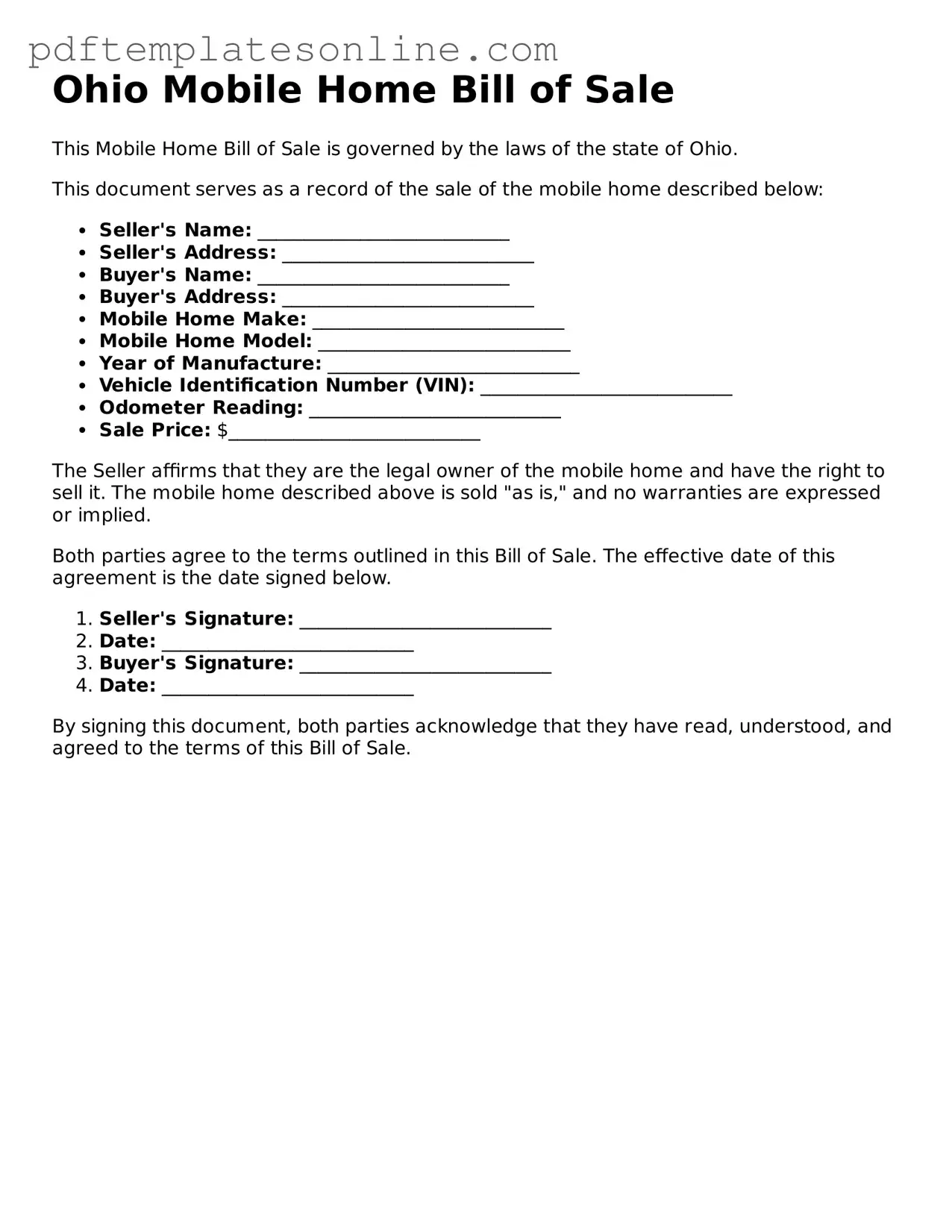Filling out the Ohio Mobile Home Bill of Sale form can seem straightforward, but many people make common mistakes that can lead to complications. One frequent error is neglecting to include all necessary information about the mobile home. Details such as the make, model, year, and Vehicle Identification Number (VIN) are crucial. Without this information, the transaction may not be legally recognized.
Another common mistake is failing to provide accurate seller and buyer information. Both parties must include their full names, addresses, and contact information. Incomplete or incorrect details can create confusion and may complicate future ownership transfers.
Many individuals overlook the importance of signatures. The form requires signatures from both the seller and the buyer to validate the transaction. A missing signature can render the document invalid, leading to disputes down the line.
Some people also forget to date the form. The date of the transaction is essential for establishing the timeline of ownership. Without a date, it may be difficult to prove when the sale occurred, which can affect legal standing.
Another mistake involves not providing adequate payment details. The form should specify the sale price and payment method. Omitting this information can lead to misunderstandings regarding the terms of the sale.
Inaccurate descriptions of the mobile home can also pose problems. Buyers should ensure that the description matches the actual condition and features of the mobile home. Misrepresentations can lead to disputes and potential legal issues.
Some individuals fail to check for any liens or outstanding debts associated with the mobile home before completing the sale. It is crucial to ensure that the mobile home is free of any financial obligations to avoid transferring unwanted debt to the buyer.
Additionally, not providing a bill of sale copy to both parties can create issues later. Each party should retain a copy for their records, as this document serves as proof of the transaction.
Many people also do not understand the importance of reviewing the form for errors before submission. Simple typos or miscalculations can lead to significant complications. Taking the time to double-check the information can save both parties from future headaches.
Lastly, some individuals may not be aware of the need for notarization in certain situations. While not always required, having the document notarized can add an extra layer of security and legitimacy to the transaction, which is particularly important for high-value sales.
